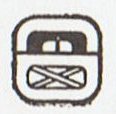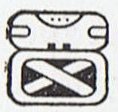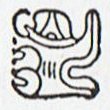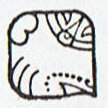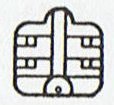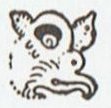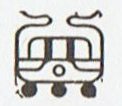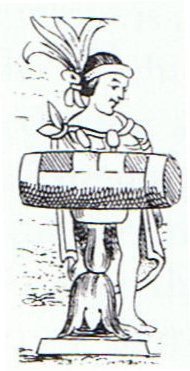5. Later in the text, at the beginning of page 80, the last 2 fishing grounds are listed:
11 + 3 = 14. Here the full stops (.) return, and 5 + 5 + 2 = 12. Between Taharoa and Rangi Meamea lies the kuhane station Hanga Hoonu:
When the movement of the Queen canoe has ceased, stopped by the powerful mana of 10 ariki maahu, it could be winter solstice, flanked by Taharoa on one side and Rangi Meamea on the other: ... At this news King Hotu replied to Honga, 'Recite (rutu) ('powerful incantations') as though the ten brothers of the chief (ariki maahu) were one whole (?).' The ten recited with all their might. This is what they recited: 'Let all movement (? konekone) cease!' They recited and sailed on swiftly: Honga, Te Kena, Nuku Kehu, Nga Vavai, Oti, Tive (corrected for 'Sive'), Ngehu, Hatu, Tuki, and Pu (corrected for 'Bu'). He worked mana in the fishing grounds. (Naming of two fishing grounds.) When Hotu's canoe had reached Taharoa, the vaginal fluid (of Hotu's pregnant wife) appeared. They sailed towards Hanga Hoonu, where the mucus (kovare seems to refer to the amniotic sac in this case) appeared. They sailed on and came to Rangi Meamea, where the amniotic fluid ran out and the conctractions began. They anchored the canoe in the front part of the bay, in Hanga Rau. The canoe of Ava Rei Pua also arrived and anchoraged ... We can conclude that the bay of the turtle (Hanga Hoonu) could refer to winter solstice. The spine of the old one (Kuukuu) is here broken by 'the turtle', presumably a code name for the surface of the earth through which Sun descends into the Underworld. I have got this idea from Michael D. Coe's The Maya: "An iconographic study by Jeff Kowalski suggests a cosmological layout for the Nunnery. The higher placement of the North Building, with its 13 exterior doorways (reflecting the 13 layers of heaven), and the celestial serpents surmounting the huts identify it with the celestial sphere. The iconography of the West Building, with 7 exterior doorways (7 is the mystic number of the earth's surface), and figures of Pawahtun - the earth god as a turtle - indicate this to be the Middleworld, the place of the sun's descent into the Underworld. The East Building has mosaic elements reflecting the old war cult of Teotihuacan, where tradition had it that the sun was born; thus, this may also be Middleworld, the place of the rising sun. Finally, the South Building has 9 exterior doorways (the Underworld or Xibalba had 9 layers), and has the lowest placement in the compex; it thus seems to be associated with death and the nether regions."
13 + 7 + 9 = 29. Rutu, we know, could be the sound of drums (although Barthel translated it as 'recite') and another alternative than winter solstice is day number 16 * 20 = 280, where the Mayan month Pax is depicted with a drum sign:
9 * 30 = 270 and it should be autumn equinox when Sun descends to the Underworld. However, it is not the canoe of the Sun King which is stopped, it is the canoe of the Moon Queen, and it ought to reach a bay of anchorage (haga) at day number 10 * 28 = 280. Only one leg of the lady above is visible, the other is hidden. It could mean autumn equinox (when her first leg appears). Her second leg should be at winter solstice, still hidden, because the drum is of the Vayeb type. The 11th fishing ground, Rangi Meamea, lies beyond and the contractions are beginning here.
The right part of Ga1-23 is another henua variant, which we recognize from ancient Egypt and from Eb6-1 (in the 24th and last period of 'the henua calendar'). It probably illustrates the void (interregnum) between one year and the next:
The henua sign is here invisible, like pharaoh inside the sanctuary of the wolf-god Upwaut, The Opener of the Way. We can guess this 'wolf-god' refers to Sirius, the Dog-Star, the fixed point in the sky which withstood precession, which was the brightest star in the night sky, and which marked the beginning of the new year:
|
|||||||||||||||||||||||||||||||||||||||||||||||||||||||||||||||||||||||||||||||||||||||||||||||||||||||||||||||||||||||||||||||||||||||||||||||||||||||||


